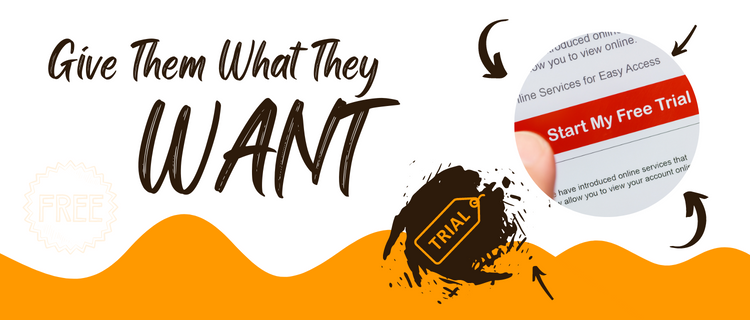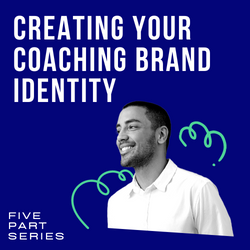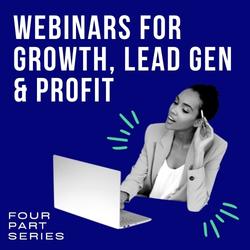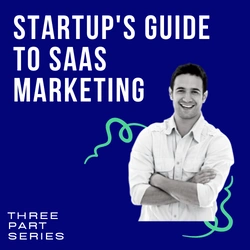Turning Leads Into Sales In 7 Days Is Possible With The Right Email Series
There are many marketing methods out there that can drive up sales, but small businesses need especially efficient ways to generate consistent cash flow. For those smaller businesses it is imperative that a well-crafted, yet automated, email welcome series is utilized in attracting newcomers no matter what state your business is currently in.
As a direct line from you to your potential client, this is an exceptionally important way to greet them, keep them interested and sell your product. With the outline we’ve put together below, you’ll get a better understanding of why your current strategy may need a revamp, or you’ll be able to effectively implement this idea into your business and turn new leads into clients.
According to leading industry sources, the number one thing that small business clients are seeking to improve in the marketing sector is turning leads into clients, and it is not an unfamiliar chord. Similarly, to a retail storefront, it can be extremely frustrating to see a customer walk in but walkout without having purchased anything.
It is not just as simple as getting them in the door. You need to have a structure in place that keeps them hooked once you have gotten their interest. To do this, we would like to show you what we have determined to be a remarkably effective strategy in turning those leads into clients.
Our four key strategies are outlined below:
A powerful and attractive offer.
You need something to draw the lead in. This can be an offer of one of your services for free, a discount or even free swag, but it must fit what those in your target demographic would find attractive.
A gripping sales page for sales conversion.
When they’re directed to your website to make a sale, that webpage needs to be something that makes everyone want it. It must stand out; it must convey your message clearly, and it should ooze quality.
The ability to target your specific market demographics.
Your website statistics, ad campaigns, email engagement and social proof are going to be key in determining if you’re reaching the right audience. There is no point in pushing your product on those that have no desire for it at all and never will. You must tailor everything to fit your audience.
A well-built email service that is friendly and trustworthy.
In order to establish trust, you must greet your new subscribers with a warm welcome, follow up with them and make them understand that your service is trustworthy and that your emails contain information that is important to them. From the first email, you need to nurture every new subscriber in order to convert them into a client.
The focus of this article will be on the well-built email strategy because without that in place it is difficult to have the other pieces work in concert.
Why are nurture emails so critical to lead conversions?
Writing the occasional bi-weekly or random email differs from the nurture series because these are a dedicated short-run (5-7 emails) that are sent out to every new subscriber. It is imperative that these are structured well from the first email so that those that follow does not get sent to the recipient’s trash unread. This alone can have a significant impact on your business – from social media interaction to your bottom line.
Think of how many automated emails you get from places you purchased one product from, but you stopped opening their emails after the first one. Now, using one hand, count how many companies’ emails you consistently open. Crafting these the right way can start getting you positive results within a week.
Consistently focused effort directed towards every new subscriber will have lasting impacts. You’ll be able to see data in your email statistics dashboard that is directly comparable to last week’s new subscriber data, which will allow you to better optimize your follow-on subject lines and message content. This will attract better clients, bring in consistent revenue and add stability to your business.
The all-important welcome message
This is going to be the hardest to write, but the time spent grinding through this will be worth it. You really must strike the balance between promoting what got them to subscribe to you in the first place and not being so aggressive that they never open another email from you again.
Everyone knows of a campaign that was either so ridiculous that it annoyed you or was so aggressive you felt like you were on a used car lot. While these approaches may work, they really excel at turning people away.
So what should I say?

Give them what they wanted. They chose to subscribe to your emails for a reason, and you need to make sure that they’re not left hanging. This means a couple of things.
First, ensure that the free thing you offered is mentioned within the first two paragraphs.
Second, remind them of what made them sign up today. If your landing page asked them a question or told them of a result that they’re looking for, you should repeat that and offer your support of their situation.
“Have you ever been frustrated by X?” We understand that you’ve been frustrated with X, and we want to let you know that we’ll alleviate your stress.
Once you have those out of the way, you need to turn to expectations. What are you going to provide them, when will they hear from you next, and what can they expect from you overall?
The last thing you’ll want to include in your welcome message is an action. You want to funnel them towards something, and that doesn’t always mean buy something.
A few ideas:
- Encourage them to subscribe to your social media. The Wendy’s Twitter account is legendary for engaging with customers. It provides a great opportunity to have direct engagement with your clients.
- Encourage them to respond to your welcome email and say hello. If your list is too large to personally manage, set up a personalized auto-response, but read what they’re saying. You don’t want to miss questions about your service.
Your goal for the first message is simply to reassure your new sub that they made the right call in trusting you with their email address.
Your second message: Highlight why you're better
This one should be sent within 24 hours of your first, and it should establish both your authority and provide some value for them. You’ll want to do this without reading from your resume. Connect with them about your experience and show them that you have a leg up without sounding like an egomaniac.
Quickly transition to one specific issue the reader is likely experiencing and make sure you stick to that. No need to bounce around and muddy the water. Speak to that specific problem, but don’t add fuel to the fire without providing an extinguisher. This is the time to put a link to content of yours that can clear things up for them and help them solve their issue.
You can get creative here too; it can be everything from a PDF to a video. Just make sure it extinguishes the specific issue you mentioned. Don’t ask them to opt-in for this, either. Simply provide the link to them, so you don’t annoy them.
Your third message: Strategic empathy
Most people want to buy things when they’re comfortable with whom they’re buying from. If they feel like they know you and, more importantly, that you understand them, they’re far more likely to buy. If you craft this third email correctly it should seem like you’ve read the mind of your subscribers.
Start by sharing a personal struggle that happened a while ago but relates to the core problem you specialize in addressing now. What did you face, and how did you overcome it? How did you feel when dealing with it?
As you’re describing your struggle, how you bested it and how you can relate to your subscriber, you should toss in another link to free content. Again, this content should reinforce your authority in this area, and it should highlight your value.
As a business, you don’t want to give everything away for free. Tease that the next email will have something else for them, but don’t give them specifics. Just let the teaser hang in the air. The free content that is directed to their specific issue will push them to open the next email where they’ll be asked to buy.
Your fourth message: The first sales email
This is where all the effort you’ve been putting in will start to pay off. This is the email where you’ll build off everything that you’ve already established to make a sale. You have them on the hook, and you’ve already proven that you can offer them some valued things for free, so now is the time to start reeling them in.
Like the last email, you’re going to want to relay a past struggle that you endured while trying to solve the problem you’re addressing now. Share what you tried and why it didn’t work. Explain how you felt when you had to keep digging for something that may solve your problem. Then introduce your proven solution and how it differs from those that failed you. This is also the time to throw in Tweets, Facebook posts, Google reviews or any social proof to back what you’re saying. If you’re still working on building your social profile, you’ll want to add these in as you get them, as they provide validity to your claims. Even just one review you can use looks good.
Don’t mention price in this email. Leave that to a link (directing to your sales letter) that you’ll put in the header, body, and footer of your email. In this email you must stick to the benefits of your offer and what makes it work.
The fifth email: Decision time

NASA would describe this as a “go or no go” event. You need to force the subscriber to decide, even if that decision is a no. By stepping above the normal sales tactics that turn so many off and by allowing your subscribers the unpressed choice, you’re showing that you’re focused on serving your readers.
It doesn’t hurt to give a few reasons why they may want to say no. You want to separate the skittish from those that are firmly in line for your products. By doing so you’ll have less time spent dealing with refunds, customer service emails and potential bad reviews from those that didn’t need your service but felt pressured to buy.
Obviously, you’ll need to make your case as to why they should opt in as well.
If you’ve already received email responses from the first few emails, it’s likely they contained questions, so now is the time to answer those. If not, you’ll want to take a shot at answering any potential questions that you think someone would ask.
You’ll also want more social proof in this email. Focus on reviews of your product that describe the value, the before and after effect and the success they’re having.
And the last thing you’ll want to do is put a time crunch on your offer. This should ideally be in the form of a countdown clock widget. 48-72 hours is a period that incentivizes purchase without bullying them.
While this is the end of our 5-part email series, don’t hesitate to build onto this for a couple more emails. If you do, you’ll want to focus the additional emails on sales, answering more questions that have arisen from the sales push and social proof.



It’s the sales page where the magic happens. This is the page that gives you a return on your marketing investment. It is on this page where we convert visitors to paying customers. Do you know the valuable elements of a high-converting sales page? You will soon. Keep Learning >

Content marketing is the backbone of the biggest success stories over the last decade. I’m referring to companies like Zomato, Canva, ThinkGeek, HootSuite and even Blendtec. It’s not surprising that so many brands are focusing on content marketing, given the average ROI is twice any other type of digital marketing. Keep Learning >



